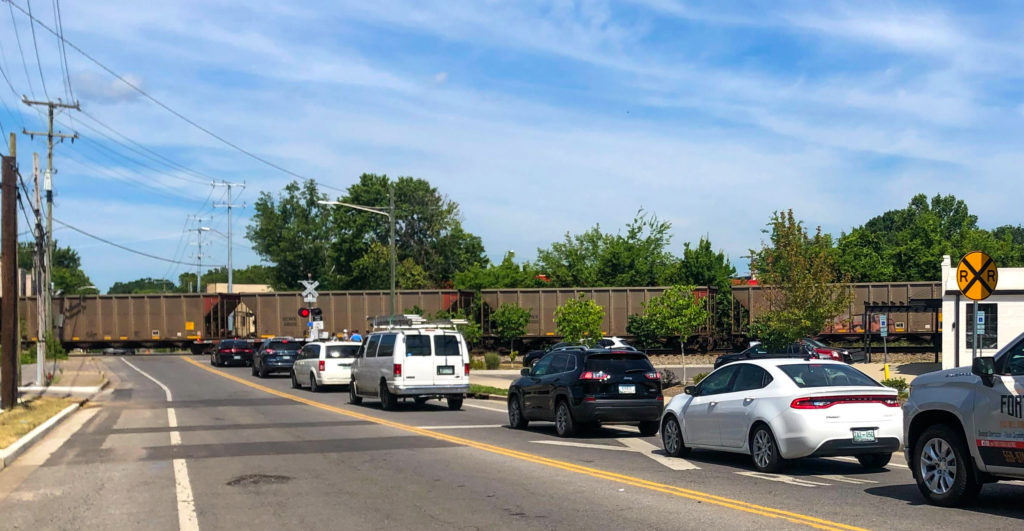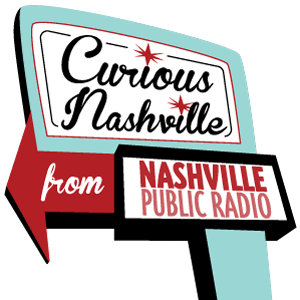
It can be a daily frustration in some Nashville neighborhoods: a freight train grinds to a halt and blocks the road. Sometimes for hours. At times, the stoppage forces ambulances and fire trucks to find other routes.
It’s a plight that has been vexing drivers for years and that prompted a question to our Curious Nashville project asking why these blockages happen.
Turns out, federal authorities want to know more as well. They’ve been keeping track of blocked crossings since 2020, including the timing and duration of blockages and whether first responders were hindered.
The Federal Rail Administration (FRA) is now asking for public feedback on its blocked crossings web portal. The website makes it easier to report trains that are parked at busy intersections.
Rep. Jim Cooper, D-Nashville, says he has received “countless” complaints about trains. He has pushed for an end to blockages and is now encouraging residents to respond.
This is ridiculous. Stopped freight trains should never block Nashville roadways, especially during rush hour. My plan to impose fines on trains that block crossings for more than 10 minutes was included in our infrastructure package but the Senate has refused to vote on it. https://t.co/oAu4H9sI9A
— Jim Cooper (@jimcoopertn) November 6, 2020
You can leave feedback about how the system is working, or how to improve it, at this Federal Register page until Aug. 15.
But, until conditions change, frustrations remain.
Stats show pervasive problem
In late 2021, rail authorities shared the blockage data they’d gathered for a period of nearly two years. It captured more than 18,000 blockages, and the FRA noted safety hazards such as pedestrians crawling through railcars and delayed trips to hospitals.
Since the start of 2020, there have been more than 1,900 blocked crossings in Tennessee, including more than 500 that lasted at least an hour.
In Nashville, there have been 36 instances where a stopped train didn’t move for an entire day.
More: Download the Tennessee blocked crossings data from the Federal Rail Administration spreadsheet.
The data identifies Douglas Avenue, Sadler Avenue, Delmas Avenue, Elm Hill Pike and 4th Avenue South as the five most-complained about blockages in Davidson County.
In fact, residents living around Douglas Avenue took the matter into their own hands in October 2021 via the creation of a de facto portal: a Facebook group entitled “Is a Train Blocking Douglas?”
With nearly 800 members, Facebook users can post the date and times of the blockages (as well as when the road is clear). Amongst the FRA data, the Douglas crossing is the blockage with the highest number of complaints and is of particular inconvenience to those nearby. Over a third of the complaints to the FRA note that pedestrians were observed climbing on, over or through the train cars, and 10% of the complaints indicated that first responders were observed being unable to cross the tracks.
This raises concerns for the Metropolitan Planning Organization, which is the agency that leads the way on Middle Tennessee’s federally funded transportation projects. At the same time, while dangerous situations — like losing lives as a result of hampered response times — are the last thing they want, MPO representatives say solutions aren’t always that simple.
So, why is the train stopped?
Max Baker, director of research and analytics for the MPO, says, to start off, it is important to know that the train operators don’t want trains to sit still.
“As they’re moving, they’re making money. When they’re sitting still, they’re not,” Baker says. “So, the goal or intent of the rail operator is to keep those trains moving.”
But, that’s not easy with a regional rail network that the MPO describes as “highly concentrated” amid dense development, and “with many areas of the region already congested” and expected to worsen.
As of 2016, the MPO estimated that CSX operates about 70 trains per day in the region.
There are a few reasons why trains have to stop.
One common reason is called “reclassification.” In this case, train cars are being pulled apart and reattached to redirect some cars to different locations.
Another reason is “passing.” As there is a high volume of trains traveling through a relatively constrained system, when one train is approaching another from the opposite direction, one must wait on the side for the other to pass through. In urban areas, trains travel at a lower speed, causing this process to take much longer.
It doesn’t help that much of the local rail infrastructure is “single track,” which means more taking turns.
Finally, trains often stop for safety precautions. Any issues with the rail, freight cars, trespassers or fatalities will cause delays in freight movement.
No easy solutions
Some Nashville residents fed up with the inconvenience have begun to propose their own solutions.
Santiago Quintero, a member of the “Is a Train Blocking Douglas?” Facebook group has been plagued by the unpredictability of the train on Douglas Avenue since he moved to Nashville four years ago.
“I’ve found out just by trial and error that, more often than not, the street is blocked by the train, and it doesn’t seem to have a pattern. It can be at midnight, or it can be at 3 p.m., or it can be for five minutes, or it can be for four hours,” Quintero says. “There’s no way to predict whether it’s going to be blocked or not.”
 LaTonya Turner WPLN News
LaTonya Turner WPLN NewsA freight train blocks McGavock Pike in East Nashville.
Quintero recounts waiting behind the train, sometimes for hours at a time, until discovering alternate routes (although these often double his commute). Recently, he proposed an idea for a livestream app that would allow residents to view the train in real time. However, he quickly discovered that a project like this would be too costly due to the camera equipment and constant monitoring.
Baker, with the MPO, notes that CSX would likely object to such a project, since recordings could allow for an analysis of train patterns.
One of the most important fixes would be to reduce crossings where trains, cars and pedestrians interact — meaning moving rail lines or building new bridges or tunnels.
While it can be difficult to get support and funding for these projects, there is some hope. On June 30, the U.S. Department of Transportation announced it would be taking applications from communities that want to improve the flow of trains and traffic. The agency is putting $573 million dollars toward creating alternate routes — like overpasses or underpasses — to redirect traffic away from rail lines.
Other safety precautions, track relocations and closures may also be addressed by these funds. The FRA will oversee the project proposals and administer the program.
The path to these changes may be long, as such proposals are often time intensive and disruptive to surrounding communities.
In the meantime, that’ll leave drivers to either wait, to get comfortable with detours, or to keep filing frequent complaints at the blocked crossings portal.


